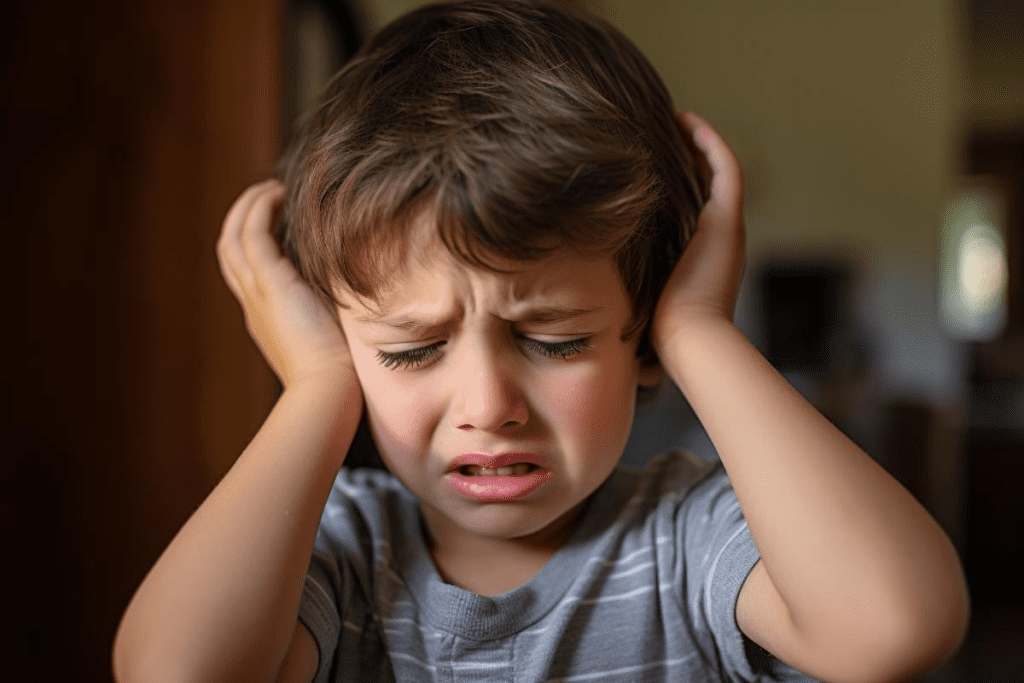Last Updated on November 14, 2025 by
When your body temperature goes up because of a viral infection, you need to act fast. A viral fever happens when your immune system fights off a virus, like a cold or flu, by raising your body temperature.

Knowing how to handle and lower a fever is key, more so during busy times when doctors are busy. Drinking lots of water, resting well, and using medicines like acetaminophen help your body get better.
Viral fever is when your body temperature goes up because of a virus. A normal body temperature is about 98.6 °F (37 °C). A fever is when it’s 1 degree Celsius or more above that.
Most viral fevers, like those from the flu or RSV, get better in 3-7 days. Knowing how viral fever works helps manage its symptoms and when to see a doctor.
In the U.S., many viral infections happen every year. The flu is a big cause of viral fever. Other viruses, like RSV and the common cold, also cause it.
Most people get better from viral fever in 3 to 7 days. It’s important to drink lots of water and rest to help fight the infection. How long it takes can depend on the virus and your health.
Key factors influencing recovery time include:
Telling viral from bacterial infections is key to the right treatment. Both can cause fever, but treatment is different.
Signs that may indicate a bacterial infection include:

Knowing the difference helps find the right medical care. If symptoms get worse or you’re unsure, see a doctor.
Hydration is key in fighting fever symptoms. When you have a viral fever, your body loses fluids and electrolytes. This makes staying hydrated very important for getting better.
Dehydration makes fever symptoms worse. It makes you feel even more unwell and can slow down your recovery. Drinking enough water helps your body cool down and heal.
Dehydration also lowers blood volume. This makes it harder for your body to get oxygen and nutrients. It weakens your immune system, making it harder to fight off the infection.
What fluids are best when you’re sick? Water is always a good choice. You can also try juice, sports drinks, broths, soups, and decaffeinated tea. These can help replace lost electrolytes and give you important nutrients.
How do you know if you’re drinking enough? Watching your urine color is a good way. If it’s pale yellow or clear, you’re likely hydrated. Dark yellow or amber-colored urine means you might need more fluids.
Other signs of being well-hydrated include feeling alert and having a normal body temperature. If you’re feeling dizzy, have a dry mouth, or have headaches, you might need to drink more.
Resting is key when fighting off an infection that causes fever. Your body works hard to fight the virus when you have a viral fever. Resting a lot and avoiding hard activities helps a lot.
Resting helps your body in several ways: It saves energy for fighting the infection. It also helps your immune system by reducing stress and working better.
Studies show rest is important for your immune system. Sleep helps your body make cytokines, which fight infections and inflammation. Adequate rest lets your body make these cytokines best.
Try to sleep for 7 hours or more each night when you’re sick. This helps your body rest well and recover faster.
Having a good recovery space is also key. Keep your room cool, quiet, and dark for better sleep. A comfortable recovery environment helps you recover faster.
Rest is important, but gentle movement is too. Gentle stretching or short walks help prevent stiffness and improve circulation. It’s about finding a balance that works for your body as you recover.
By focusing on rest, creating a good recovery space, and mixing rest with gentle movement, you can recover from viral fever better. This helps you get back to normal temperature faster.
Lowering fever is key when fighting viral infections. Many medicines can help. Acetaminophen, for example, can drop the fever in over 80% of cases. It’s a top choice for managing fever.
Acetaminophen is the go-to for fever because it’s safe and works well. It stops the brain from making fever-causing chemicals. It helps with fever and also eases headaches and body pains.
Key benefits of acetaminophen include:
NSAIDs, like ibuprofen, also help with fever. They not only cool the body but also fight inflammation and pain. This makes them great for fevers with inflammation or pain.
Important considerations when using NSAIDs:
In some cases, switching between acetaminophen and NSAIDs might be advised. Butalbital does this under a doctor’s watch to avoid overdose or bad reactions.
Guidelines for safe alternation:

Tepid sponging is a classic way to lower fever. It involves gently cleaning the body with lukewarm water. Use a sponge or cloth in water that’s about 39 °C or 102.2 °F.
Don’t use cold water, as it can make you shiver. Shivering raises your body temperature. The goal is to cool down slowly and comfortably.
There are other ways to cool down without getting chills. Wear light, breathable clothes and use fans. Also, stay in a well-ventilated room or use a cooling pad.
It’s important to keep the environment cool and comfortable. This helps your body recover better.
Good nutrition is key to a strong immune system. Eat foods rich in vitamins and minerals like fruits, vegetables, and whole grains. This boosts your immune system.
Drinking plenty of fluids is also important. It helps your body function and recover. Drink water, clear broths, or electrolyte-rich drinks to replace lost fluids and electrolytes.
Using these home remedies with medical treatment can help with viral fever. It’s a quick fix that can be done by making a few simple changes.
Knowing when to get medical help is key to recovery. Viral fever is common but can sometimes lead to serious complications.
The CDC says up to 15% of adults might need medical help for a fever. This shows how important it is to watch your symptoms closely.
If you’re an adult with a fever over 3-4 days or above 103 °F, see a doctor. Also, if you have health issues or severe symptoms, get medical help right away.
Some symptoms mean you need to see a doctor fast. These include:
If you or someone you know has these symptoms, call emergency services or go to the emergency room. For more info, visit Hartford Healthcare.
About 13.6 per 100,000 people might need to be hospitalized for viral fever. Knowing this can help you take your symptoms seriously and get help when needed.
Some groups face higher risks from viral fever. These include the elderly, young children, and those with health issues. They should see a doctor sooner if they have symptoms.
For example, if you’re over 65 or have a chronic condition, a fever that doesn’t go away, or a severe symptom, you should see a doctor. Also, if your baby is under 3 months old and has a fever, get medical help fast. Their immune system is not fully developed.
By knowing the warning signs and the statistics, you can make smart choices about when to get medical help. This ensures the best care for you or your loved ones.
Getting better from viral fever needs a careful mix of quick recovery and good care. It’s important to know that a fever over 40 degrees C (104 degrees F) is high. It might mean you have a serious infection.
Drinking plenty of water, resting well, and using the right medicines like acetaminophen or NSAIDs helps. Knowing when to get medical help is also key. This way, you can manage your fever and get better safely.
Having a balanced recovery plan helps ease symptoms and boost your immune system. This lowers the chance of serious problems. Knowing the signs that mean you need to see a doctor is critical to avoid severe issues.
By using these methods, you can overcome viral fever and get back to feeling well.
A fever is when your body temperature goes over 100.4 °F (38 °C).
40 °C is the same as 104 °F.
Normal body temperature is about 98.6 °F (37 °C). But, t can slightly vary from person to person.
Viral fevers usually last from 3 to 7 days.
Fever symptoms include a high body temperature, sweating, chills, headache, and feeling tired.
To quickly lower a fever, use medicines like acetaminophen or NSAIDs. Stay hydrated and rest well.
A low-grade fever is a body temperature between 100.4 °F (38 °C) and 102.2 °F (39 °C).
Bacterial infections need antibiotics, but viral ones don’t. A doctor can tell you which one you have.
To manage a fever at home, try tepid sponging, staying cool, and getting lots of rest.
See a doctor if your fever is very high, lasts too long, or if you have severe symptoms.
Drink lots of fluids like water, clear broths, or drinks with electrolytes to stay hydrated with a fever.
Yes, you can take medicines like acetaminophen or NSAIDs to lower a fever.
Use a thermometer to check your baby’s temperature. A fever in babies is over 100.4 °F (38 °C).
The 15% rule says adults with a fever might need medical help if they get worse or have severe symptoms.
Hospital rates for fever-related illnesses vary. Some studies show rates around 13.6 per 100,000.
James, T. (2018, July 30). Viral fever: Symptoms, causes, diagnosis, treatment, and prevention. Healthline. https://www.healthline.com/health/viral-feverVijayan, V., & Kumar, D. (2023, June 27). Viral fever – Symptoms, causes, types, prevention, treatment. Pace Hospital. https://www.pacehospital.com/viral-fever-symptoms-causes-types-prevention-treatmentEl-Radhi, A. S. M. (2012). Fever management: Evidence vs current practice. Archives of Disease in Childhood, 97(3), 211-218. https://www.ncbi.nlm.nih.gov/pmc/articles/PMC4145646/
Subscribe to our e-newsletter to stay informed about the latest innovations in the world of health and exclusive offers!